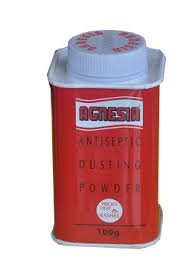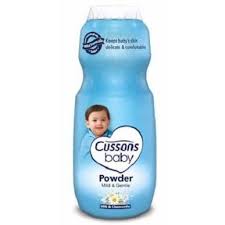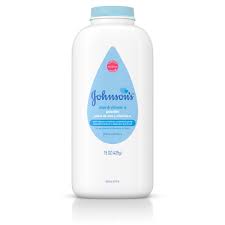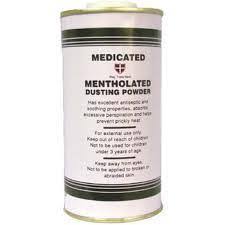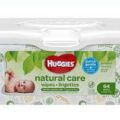Temperature in most parts of Nigeria can be very high leading varying degree of discomfort for the young ones in your life. Noticing that your baby has a rash can be alarming. The rash may be causing your little one discomfort. Worse still, you might not know where it came from. While there are many skin conditions that babies often experience, heat rash is one of the most common. In fact, it may even be the first type of rash to affect your child.
What Is Baby Heat Rash?
As the name suggests, heat rash is a skin condition that develops when your baby’s skin gets too hot. More specifically, heat rash is caused when sweat gets stuck in your baby’s pores. When your baby’s body becomes hot, their skin begins to produce sweat (which is a cooling mechanism for the human body). Normally, drops of sweat would simply be released through pores. However, babies have tiny pores that can easily become clogged. Heat rash is the result of sweat getting caught in those small pores as it tries to reach the surface of your little one’s skin.
Dry season is the most common season for heat rash because we all sweat a bit more during the hot summer months. Humid climates can also contribute to heat rash. But this skin condition doesn’t only occur when the temperature is high! It can also form when it’s cold, especially if your baby is wearing many layers of clothing. Remember to de-layer when you go indoors.
Fortunately, heat rash isn’t a serious condition. It’s perfectly normal for babies to get heat rash, and with proper treatment, it usually goes away after a few days.
How Can I Tell If My Baby Has Heat Rash?
Babies have soft, delicate skin. This means that their skin is more sensitive and prone to conditions like dryness, eczema, and rashes. Baby heat rash can be identified by the following symptoms:
- Patches of red, itchy skin
- Tiny bumps or pimples
- Slight inflammation or puffiness
- Irritation and discomfort
If you’ve noticed these telltale signs on your baby’s skin, they may be suffering from heat rash. Keep an extra close eye on your baby’s chest, neck, diaper area, or armpits. Your baby is more likely to develop heat rash in these places because they are the areas that usually produce the most sweat. Clothing also tends to fit tightly around those parts of their body.
So how can you tell baby heat rash apart from other skin conditions, like eczema or cradle cap? Eczema will normally cause flaking and feel rough to the touch. Heat rash, on the other hand, causes small bumps or tiny blisters to form on the surface of your baby’s skin. Cradle cap also causes red, flaky skin, but this condition can only form on your baby’s head and forehead.
How Can I Prevent My Baby From Getting Heat Rash?
If your baby hasn’t yet developed a heat rash, consider yourself lucky! It’s a common ailment that most babies suffer from at one point or another. But this doesn’t mean baby heat rash is inevitable! There are several simple steps you can take to prevent it.
Keep Your Baby Cool
If your baby is nice and cool, their body doesn’t need to sweat. No sweating means no heat rash! If your baby’s cheeks become flushed, it’s probably a sign that they’re a bit too hot. Whenever you notice rosy red cheeks, move your baby to a cooler area.
Another option when you notice rosy red cheeks is to run cool water over your little one’s skin. The cool water will rinse away the sweat and body oil. Next, you can apply a cool, wet washcloth to lower your baby’s body temperature.
Keeping your baby cool also means checking your baby’s body temperature frequently. Babies tend to get hot quickly, much faster than adults do. So keeping an eye on your baby when you’re in a hot environment, such as outside, will help prevent a heat rash from developing. And, mom, you know your little one best. If you notice your baby starting to get uncomfortable and fussy while outside — or even in a warm house — this is a sign that your baby may be too hot.
Don’t Spend Too Much Time In The Sun
While there’s nothing wrong with enjoying some sunshine with your little bundle of joy, don’t spend too long in the sun. Too much direct sunlight can cause sunburn and poses dangers for your baby’s sensitive skin. The heat the sunlight brings can also lead to baby heat rash.
Keep Your Baby’s Skin Dry
Moisturized skin is generally a good thing, but too much moisture can irritate your baby’s skin. This is especially true when heat is added to the mix. To prevent heat rash, make sure you are using a moisturizer formulated for your baby’s skin type so no excess moisture remains. Always make sure your baby is dry before dressing them or putting on a new diaper.
And remember to pay particular attention to your baby’s skin folds when drying your little one off after a bath. We’re talking about areas such as the neck, arms, legs, and diaper area. You’ll want to make sure these specific areas are completely dry.
Dress Your Baby In Layers
Babies are a bit fickle when it comes to temperatures. They get cold easily, but they can also get too hot very quickly. The easiest solution is to dress your little one in layers. Whenever your baby seems hot, simply remove a layer. When you notice that your baby is feeling cold again, just add another layer.
Avoid Dressing Your Baby In Tight Clothing
Tight-fitting clothing won’t allow your baby’s skin to breathe and can actually lead to heat rash. Moisture can easily lock into your baby’s skin when they were tight clothes, creating the perfect environment for a heat rash to develop. Dress your little one in loose clothing to prevent heat rash from occurring.
What Are The Best Ways To Treat Baby Heat Rash?
As we mentioned earlier, heat rash is easy to treat and normally goes away in two to three days, if not sooner. Here are the best ways to treat your baby’s heat rash.
Let Your Baby’s Skin Breathe And Dry Out
It’s extremely important to keep the areas affected by heat rash completely dry. This is essential to get rid of your baby’s heat rash. Why is keeping your little one’s skin dry so important? As we explained earlier in the post, heat rash is caused by sweat clogging your baby’s pores.
Letting your little one’s skin breathe is an excellent way to clear up heat rash because it dries their skin. Allow your baby to be naked (or just in a diaper) for as much time as possible until the rash goes away.
Adjust The Temperature In Your Home
One easy way to treat heat rash is to lower the temperature in your home. This will help keep your baby’s skin cool and dry, which will help the rash to clear up on its own. It’s particularly important to make sure your baby isn’t too hot while they sleep. Try turning a fan on low if your baby’s room tends to be too warm at night.
Apply Skin Care Products Made Especially For Babies
Using the right cream can work wonders when treating your baby’s heat rash. Just be sure to choose skin care products that are safe to use with infants and toddlers. Stelatria is an excellent product to use, as it will soothe your baby’s skin while also helping the rash to heal.
Use Mild Cleansers Rather Than Soaps
Most soaps are simply too harsh for a baby’s delicate skin and should be avoided whenever possible. Instead, use mild cleansers to bathe your baby as part of their daily hygiene routine. This is a great way to treat heat rash and will help keep your baby’s skin healthy. Mustela offers several baby-friendly cleansers, like the Soothing Cleansing Gel and Gentle Cleansing Gel.
Be Gentle With Your Baby’s Skin
This may seem obvious, but it’s worth repeating: always be gentle with your little one’s skin! Be careful not to rub or scratch your baby’s skin when dressing them. You can even let your little one air-dry after a bath to cool off if you have the time.
Best Baby Powder For Heat Rash In Nigeria
- Agnesia baby powder
Traditionally used by Asian mothers for generations, a trusted household brand in Asia to reduce rashes and itchy skin due to prickly heat. It’s an antiseptic powder to reduce rashes / prickly heat and is suitable for adults, children & babies. Agnesia Antiseptic Dusting Powder is a medicated dusting powder that contains protectant and dermatological ingredients that are used to treat and prevent heat rash or prickly heat, nappy rash, cosmetic rash caused by infections. It is also used to protect skin from being irritated and wet caused by sweat or diaper use.
How to use: Apply powder to the affected area each time after bath and at bedtime. Key Ingredients 25% Zinc Oxide keeps the body cool and comfortably dry by absorbing excess moisture on the skin, 0.5% Chlorhexidine helps to fight off bacterial and fungal infections and speed up the healing process.
- Cussons Baby Powder
Cussons Baby Powder is a mild & gentle powder that can absorb excess wetness and keeps baby’s skin feeling soft and fragrant. Enriched with Milk to help nourish and Chamomile to soothe your baby’s skin, keeping it healthy and soft. Mild formulation.
How to use: Gently shake the powder into your hands away from your baby’s face and apply it onto their skin. Always keep powder away from the baby’s nose and mouth. Our Tip: Apply the powder to the skin and let your baby rest without the diaper on for a short period of the day.
- Johnson’s baby powder
Johnson’s baby powder gently absorbs moisture to soothe delicate skin, and leave it feeling soft and smooth. Specially formulated for babies, this baby powder is dermatologist-tested and clinically proven mild and gentle. This hypoallergenic baby powder is free of parabens, phthalates, dyes, and harsh fragrances. Formulated to be gentle, never harsh, this powder has a light, silky texture for easy application. It’s great for kids and adults, too! Try it at the beach to help easily remove sand or use it as a dry shampoo alternative for adults.
4. PZ Cussons Medicated Mentholated dusting powder
This powder has excellent antiseptic and soothing properties, absorbs excessive perspiration, and helps prevent prickly heat. The dusting powder is made with great absorbent and smooths the skin. Sprinkle into the palm of the hand and gently pat onto body after bathing or showering.
The body powder can be used as an anti-fungal agent in excess sweating and prickly heat. The powder also provides relief in skin rash caused by excessive sweating. This safe and effective powder is made with ingredients to leave delicate skin soft dry and oh-so-smooth, without any irritating hypoallergenic and it is pediatrician-tested. Just smooth the powder onto the skin and reapply as needed.


